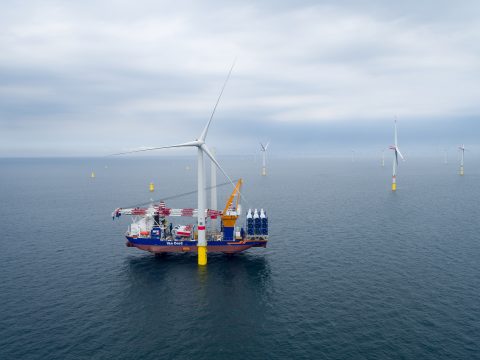
Offshore wind
“None of the existing installation vessels can install 15 MW turbines”
Turbine installation at North Sea wind farm Deutsche Bucht. Northland Power’s Deutsche Bucht offshore wind farm is located in the North Sea, more than 100 kilometres from the mainland in the German Exclusive Economic Zone. The power plant with 33 wind turbines of type V164-8.4 by MHI Vestas will provide a grid capacity of close to 269 megawatts. media@owf-deutsche-bucht.de
Rapid advances in offshore wind technology, making turbines bigger and more powerful, are currently outpacing the infrastructure capacity needed to install them. London-based data supplier IHS Markit warns against this in a new report on the development of the offshore wind market.
Want to read more?
You have read all of your free premium articles for this month. Please become a subscriber to keep reading.
Subscribe now!
Take advantage of our exclusive offer to get full access to all premium content.




